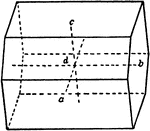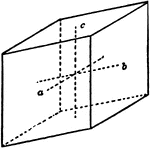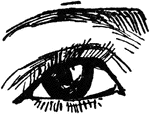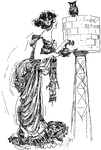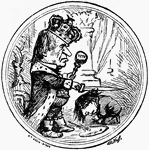
Inner Ear
"Transverse Section through Side Walls of Skull, showing the Inner Parts of the Ear. Co, concha or external…
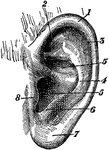
External Ear
"External Ear, or Pinna. 1, helix; 2, fossa of antihelix, or fossa triangularis; 3, fossa of helix,…

Dome System of Hagia Sophia
"Dome-System of the Church of Sta. Sophia at Constantinople. The Byzantine style of this first period…

Grove Cell
An illustration of Bussen's cell.The Grove cell was an early electric primary cell named after its inventor,…
Vacuum Gauge
A vacuum gauge is used to measure the pressure in a vacuum — which is further divided into two…

Pulley
A pulley (also called a block) is a mechanism composed of a wheel (called a sheave) with a groove between…

Pulley Blocks
An illustration of a block pulley. A pulley (also called a block) is a mechanism composed of a wheel…
Pulley Blocks
An illustration of a block pulley. A pulley (also called a block) is a mechanism composed of a wheel…
Pulley Blocks
An illustration of a block pulley. A pulley (also called a block) is a mechanism composed of a wheel…
Pulley
A pulley (also called a block) is a mechanism composed of a wheel (called a sheave) with a groove between…

Scale Worm Nervous System
"Esophageal Ring. Anterior end of nervous system of Polynoë, a polychaetous annelid, showing, a,…

Sir Thomas More
Sir Thomas More (7 February 1478 – 6 July 1535) was an English lawyer, author, and statesman who…
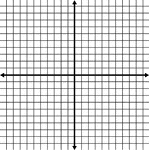
Blank Coordinate Grid With Grid Lines Shown
Illustration of an xy grid/graph with grid lines shown. It is the Cartesian coordinate system. Neither…
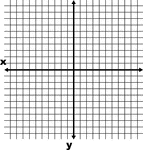
Coordinate Grid With Axes Labeled And Grid Lines Shown
Illustration of an xy grid/graph with grid lines shown. It is the Cartesian coordinate system with both…
Dakota Artesian System
East-west section across South Dakota to show the Dakota artesian system. The Dakota sandstone is composed…
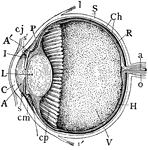
Median Vertical Anteroposterior Section of Eye
"Human Eye, in Median Vertical Anteroposterior Section. (Ciliary processes shown, through not all lying…
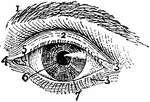
Exterior of Left Human Eye
"Exterior of Left Human Eye. 1, supercilium, or eyebrow; 2, palpebra superior, or upper eyelid; 3, 3,…

Muscles of Left Eyeball
"Muscles of Left Human Eyeball. so, superior oblique, passing through a trochlea or pulley; io, inferior…
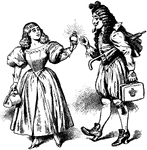
Prince Charles and Flora MacDonald
A political cartoon depicting the separation of Prince Charles and Flora MacDonald.

Bones of Human Foot
"Bones of Human Foot, or Pes, the third principal segment of the hind limb, consisting of tarsus, metatarsus,…
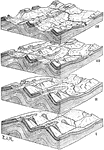
Development of River Systems
Diagrams showing the development of river systems in anticlinal folds with anticlinal valleys as the…
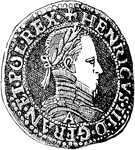
Obverse Side of Silver Franc of Henry III
"A French silver coin and money of account which since 1795 has formed the unit of French monetary system."…
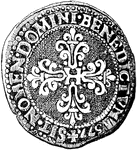
Reverse Side of Silver Franc of Henry III
"A French silver coin and money of account which since 1795 has formed the unit of French monetary system."…
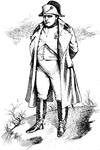
Napoleon
An illustration of Napoleon; Napoleon Bonaparte, later known as Emperor Napoleon I, was a military and…

Benjamin Franklin
Benjamin Franklin (January 17, 1706 – April 17, 1790) was one of the Founding Fathers of the United…

Edmund Burke
Edmund Burke (12 January 1729 – 9 July 1797) was an Irish statesman, author, orator, political…
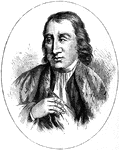
Samuel Adams
Samuel Adams (September 27, 1722 – October 2, 1803) was a statesman, political philosopher, and one…

Archaeopteryx Lithographica
"Archaeornithes is at present represented by but one member, the first undoubted fossil Bird, made known…
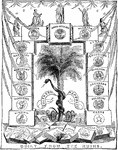
Southern Republic Built from the Ruins
A political cartoon of the Southern states being built from the ruins after the Civil War.
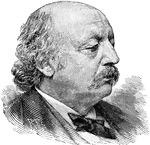
Benjamin Franklin Butler
Benjamin Franklin Butler (1818 - 1893) was a lawyer and politician who was a U. S. Representative for…
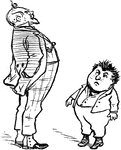
Frank Leslie Interview with Nast
Caricature of Thomas Nast's first interview with Frank Leslie. Frank Leslie was a great publisher, in…

Jacob Pocock Farm-house
View of the farm-house of Jacob Pocock, near Bath, England, the second training place of the "Bencia…

Jacob Pocock Farm-house
View of the farm-house of Jacob Pocock, near Bath, England, the second training place of the "Bencia…

Heenan and Thomas Championship Fight
The championship fight between Heenan and Thomas Sayers, on April 17, 1860.

Giuseppe Garibaldi's Triumphal Entry Into Naples
The triumphal entry of Garibaldi into Naples. Garibaldi was an Italian military and political figure…
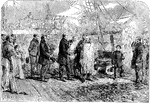
Giuseppe Garibaldi's Farewell Visit to Admiral Mundy
Farewell visit of Garibaldi to Admiral Mundy on board the "Hannibal" at Naples.
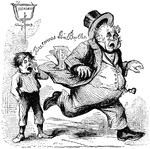
Nast's First Caricature - John Bull
In January of 1863, Harper's Weekly published Nast's first caricature cartoon - a boy frightening John…
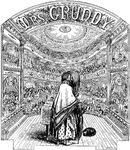
Mrs. Grundy Page Title
Title page made for Mrs. Grundy on Saturday July 8th, 1865. Mrs. Grundy was a short-lived periodical…
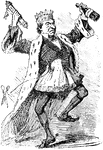
Impeachment of President Andy Johnson
The President's joy at the result of the impeachment trial of 1868.
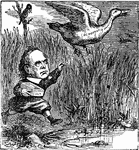
Chief-Justice Salmon P. Chase Capturing the Democratic Convention
Nast's political cartoon entitled, "A wild-goose Chase" of Chief-Justice Chase trying to capture the…
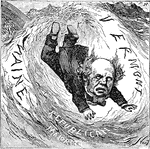
Democratic Nominee Governor Horatio Seymour
A political cartoon of Horatio Seymour, an American politician. Seymour was governor from New York from…

Mayor John Thompson Hoffman Covering Frauds
A ring cartoon of 1868 showing Mayor Hoffman on a screen to cover the city frauds, a respectable screen…

President "Andy" Johnson Completes his Term of Office
President Johnson's farewell, "farewell, a long farewell, to all my greatness!"
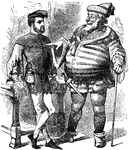
Sir Jonathan Falstaff
Sir Falstaff is a fictional character who appears in three different Shakespeare plays. This drawing…
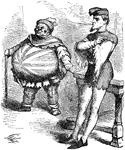
Sir John Bull Falstaff
Sir Falstaff is a fictional character who appears in three different Shakespeare plays. This drawing…
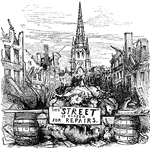
Black Friday in Wall Street
"What a fall there was, my countrymen!" This picture from Nast depicts the wreck in Wall Street after…

August Belmont Democratic Scapegoat
August Belmont: The Democratic Scapegoat for "Boss Tweed." The first cartoon in which the face of "Boss"…

Economical Council and New York Corruption
The Economical Council in Albany, NY showing New York corruption. This is the second Tweed cartoon.…
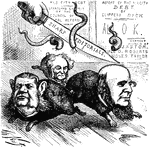
White-Washing Committee's Reports
Criticism for the "White-Washing Committee's report on the "ring's" accounts. The "White-Washing Committee"…

Napoleon III and Otto von Bismarck
Napoleon III and Otto von Bismarck during the Franco-Prussian War. Louis Napoleon as the friend of Death.


